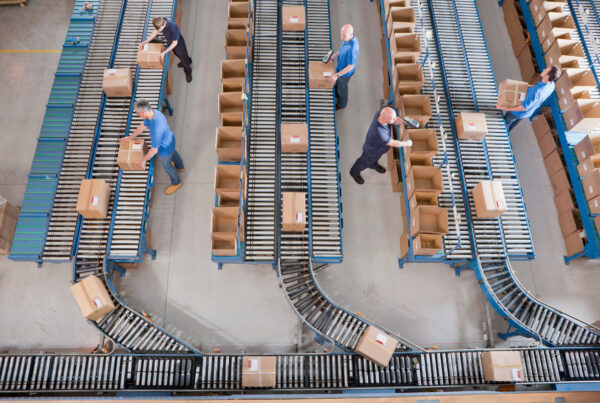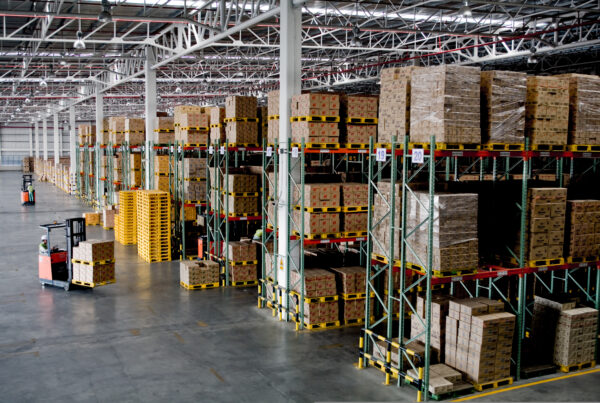SRSI warehouse operation expert Jim Munafo shares key advice for distribution center optimization:
Lack of Warehouse Design/Layout Planning or Maintenance
Issue: Moving product too far from point A to point B or even to point C will significantly add to costs. These costs include forklift operators, excess equipment, and maintenance/charging to maintain the excess equipment.
Solution: Placing machines that are needed in proper areas, using slotting logic or even some type of zone slotting layout can vastly improve your team’s efficiency, reduce forklift traffic, potential collisions due to the decreased traffic, and reduce the overall cost in the DC.
Extra Handling
We’re always taught that the fastest way to travel is a straight line from point A to point B. Yet we often see DC’s unload into a staging area and then move that product to multiple locations all over the building with no rhyme or reason as to how those locations are selected. From there the product is moved to a forward pick location at best. I have even seen sites send pallets to the top-level above pick locations only to “rotate” the stock down level by level until it finally gets to the pick location after several moves! It sounds crazy – but I have seen it happen on multiple occasions.
Inventory Moving Due to Capacity Issues
Too often we have customers tell us they need 5,000 storage locations designed in a specific space. But do those 5,000 locations allow for a true storage number?
Capacity above 85% is too high and leads to decreased productivity for your team. This will then trickle down and affect the pickers that need those pallets to fulfill orders. If that company truly plans to store 5,000 pallets, they’ll need almost 5,900 storage locations!
Projected growth must also be considered! What is the 5-year and 10-year projection? Too often, we put our DC teams through the pains of a re-racking project or expansion only to see more space issues occur again. This can be deflating to the team on the floor and cause them to lose confidence in their leadership team.
Batch Sizes
Not only can this lead to transportation waste if items are slotted all over the DC, but they also add to DC capacity issues which in turn lead to efficiency issues by driving one closer to 85% capacity faster than needed. Procurement and Planning need to work with DCs to help the team, not hurt them!
Tip: A best practice is to have these teams spend a few days at the DC. Let them see the effects of over-production on the sites.
One time, I walked a site I had just taken over and found that 17% of the storage capacity was consumed by “shipping boxes” for outbound orders! Instead of having about 75 pallets (what was truly needed for all sizes being used combined) the site had over 450 pallets! Nobody was managing the box vendor who over-loaded the DC with inventory and was using good storage locations for their own greed.
Random Storage Locations
If you do not have any type of WMS or WES controlling your slotting then you are actually “planning” for waste. At a minimum, there should be some type of home-grown logic used to slot fast-moving items closest to the dock or their pick locations.
Jim Munafo, SRSI Sales Associate
6 Sigma Certified Black Belt
[email protected]
 Skip to main content
Skip to main content



